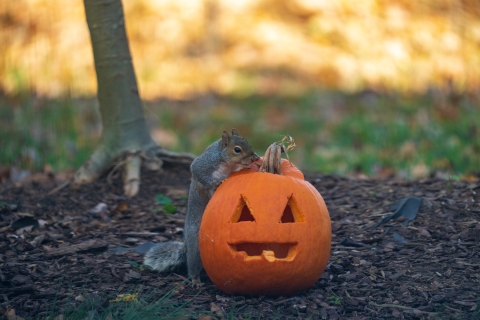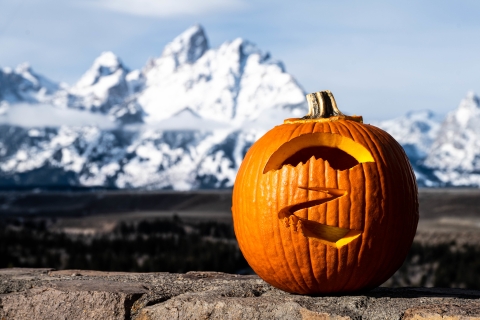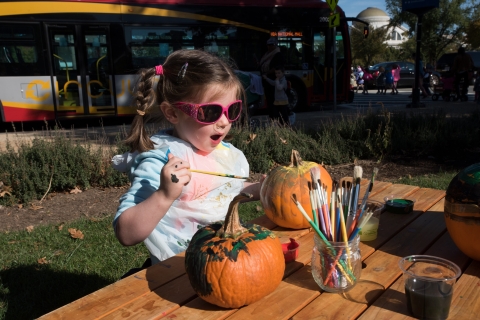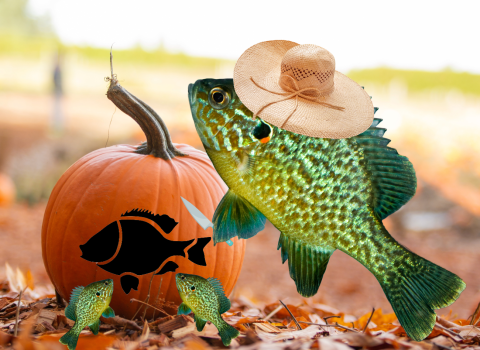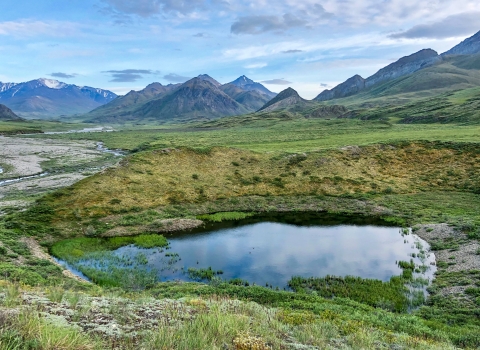It's that time of year again - when people debate with strangers on the internet about proper pumpkin care and wildlife health. There’s a lot of misinformation out there regarding the preservation of carved pumpkins, so your favorite wildlife nerds at U.S. Fish and Wildlife Service are sharing key facts and considerations for a safe spooky season.
No such thing as a free lunch? (Wildlife beg to differ!)
Friendly reminder: Critters will likely eat (or at least nibble on!) your carved jack-o’-lanterns. Squirrels, raccoons, deer, moose, foxes, mice, and insects might feast on the delicious orange porch snack you leave near your front door. “How nice of you!” they probably think as they eat their weight in slimy pumpkin goodness. Keep this in mind when placing your pumpkins outside – you'll likely attract wildlife.
Decomposition is inevitable (Nature’s going to do its thing!)
In recent years, social media users have posted various “tricks” to keep a carved pumpkin from rotting so quickly. Keep in mind that letting nature take its course is always an option (and probably the easiest one).
Carved pumpkins are eventually going to decompose one way or another. Always follow the directions of any product you’re applying to a pumpkin for your safety and others’ (including wildlife).
To paint or not to paint?
Painted pumpkins can make for an easier way to create a fun or creepy jack-o'-lantern. However, a painted pumpkin can potentially be toxic to wildlife if they eat it.
If you choose to paint rather than carve your round orange canvas, please keep it indoors and away from any critters who might feast on its painted flesh. You can also explore nontoxic paint options made with natural ingredients when possible.
Again, always follow the directions of any paint or cleaning product you use on a jack-o'-lantern, for your safety and the safety of wildlife.
Sustainable disposal: recycling, composting, and more
Consider recycling or composting pumpkins and gourds once the festivities are over! If you cannot compost at home (or it’s not your thing), many communities, cities, and municipalities provide free composting services or recycling programs these days. Do some research in your local community to explore whether government agencies, nonprofits, businesses, or other organizations might collect or allow you to drop off your pumpkin for composting or recycling during the fall and winter months.
You can also explore other creative ways to use your pumpkin or jack-o'-lantern sustainably depending on your locality, climate, and geography. For instance, some zoos or animal rescue centers might accept pumpkins if they are free of toxic chemicals. Pumpkin seeds might also be eaten by people or wildlife.
Explore additional eco-tips for helping wildlife and healthy habitats year-round. For instance, leaving leaves on the ground each fall can provide important habitat for a diversity of native wildlife that need it including butterflies, moths, salamanders, toads, turtles, and many other species.
Nature-themed pumpkin carving templates -- for this spooky season or next!
Catch some big compliments from your neighbors with several “fish-o-lantern" templates you can use courtesy of our Fish and Aquatic Conservation team or these wildlife carving stencils. Give ‘em pumpkin to talk about – you might even inspire a gourd conversation about wildlife conservation!

